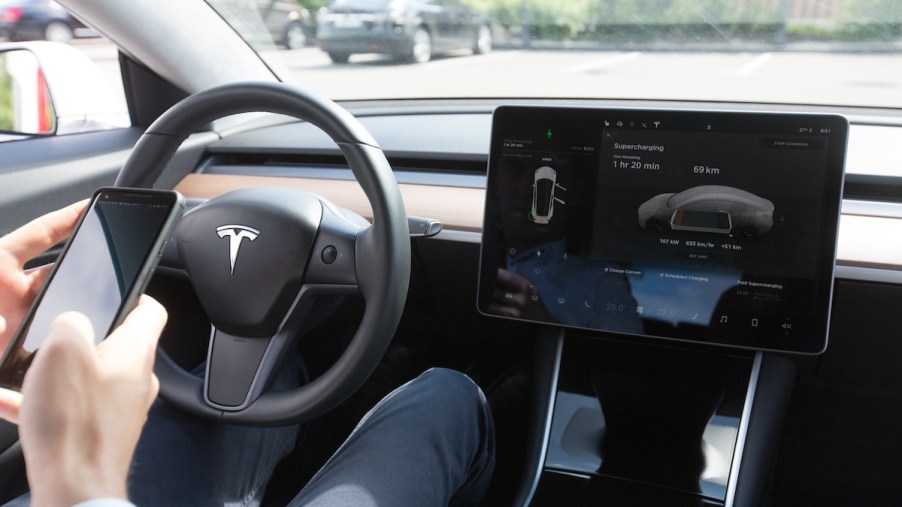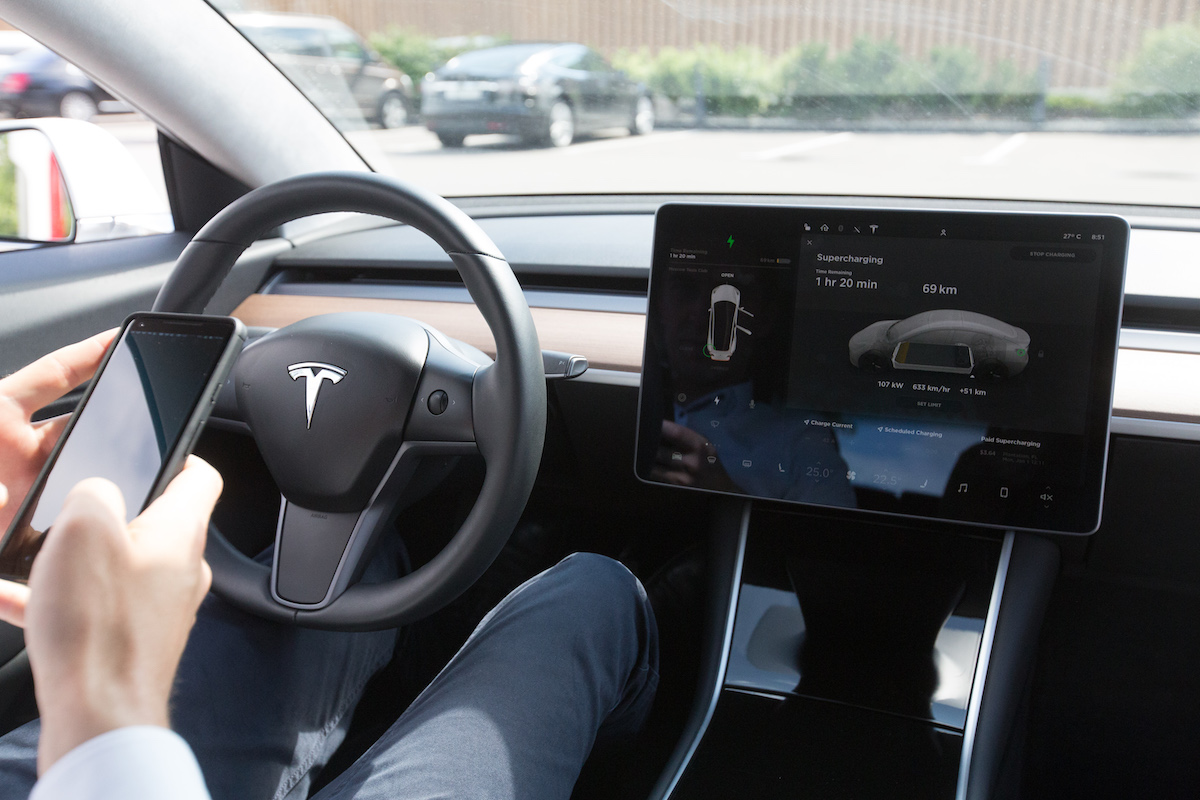
How Does Charging Your Phone Affect an EV’s Driving Range?
There are many perks of owning an EV, especially not having to deal with high gas prices. All you need is electricity to charge the EV’s battery, which is inexpensive compared to gasoline. Still, as with an internal combustion engine car, using certain features in your EV will affect its fuel economy.
For example, heating your EV’s battery and interior in the winter sucks up a lot of juice. However, using many features inside your EV doesn’t drastically affect its fuel efficiency. So, how much energy does charging your smartphone use?
How much energy does an EV use per hour?
According to Edmunds, the EPA measures an EV’s fuel economy using kWh (kilowatts per hour) instead of mpg. The amount of kWh used per 100 miles is what determines an EV’s efficiency. For example, the 2021 Tesla Model 3 uses 23 to 25 kWh per hour, depending upon the trim and drivetrain.
That makes it the most efficient vehicle in the segment, according to the EPA. Many other EVs, including the Hyundai Kona Electric and Tesla Model S, use 28 to 29 kWh per hour. The thirstiest EVs, like the Hyundai Ioniq 5 and Kia Niro Electric, typically use 30 kWh per hour.
Virta says your EV probably uses around 282 kWh of electricity in one month, but that can depend on several factors. The site uses taking long trips as an example: Keeping the EV’s battery running at a constant rate will cause some loss in efficiency. You can also expect your EV to lose some range if you drive too fast or slam the brakes frequently.
Charging your smartphone in an EV barely eats up any range

To find out how much charging a smartphone would affect your EV’s range, convert watts to kilowatts. JustEnergy says to use the following formula: P(kW) = P(W)/1,000. Therefore, if we take the average of 5 watts used to charge a smartphone, it looks like this: 5W/1,000 = 0.005 kW.
That’s a minuscule amount of electricity lost compared with what most EVs use per hour of driving. If you have range anxiety, Wired says you should be focused on how often you use your EV’s climate control settings. Running the heat or air conditioner can use up to 4 kWh per hour.
Heating your car battery in the winter without a heat pump uses up to 2.4 kWh. Many of your car’s high-tech infotainment components can use between 100 and 350 watts per hour. Idling your EV, carrying too much weight inside the car, and riding on bad tires will also deplete your EV’s battery faster.
Fortunately, there are also plenty of ways to keep your EV’s range as high as possible. You can save almost 9 kWh by lowering your cruise control from 70 to 68 mph. Heated seats consume only 50 watts of energy per seat.
USB chargers, along with interior lighting and your EV’s windshield wipers, use the least amount of energy. Focusing on good driving habits and reasonable A/C usage are smarter ways to conserve your EV’s range.
How much energy is required to charge a smartphone?
EnergySage says it takes 5 watts of electricity to charge a smartphone using a 120-volt outlet and a standard charger. If you charge your phone for one hour each day, that’s .035 kWh used in a week.
Even if you charged your phone every day for a month, you’d barely notice the difference in your power bill. The U.S. average cost of 1 kWh is about 15 cents, and watts are much smaller than kilowatts. That means you’ll spend between 2 to 5 extra cents per month on daily phone charging.


